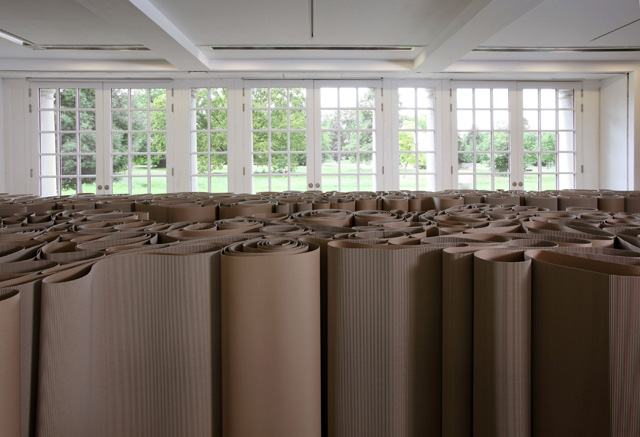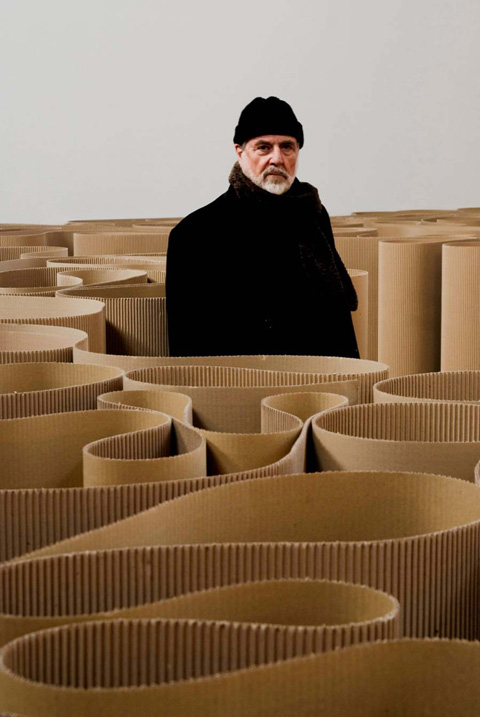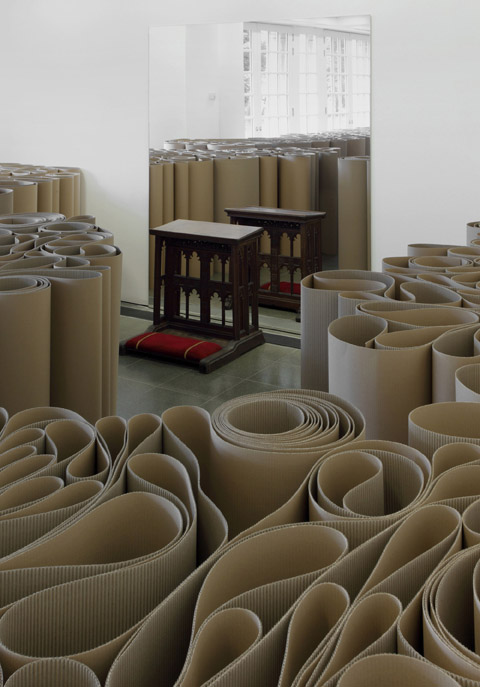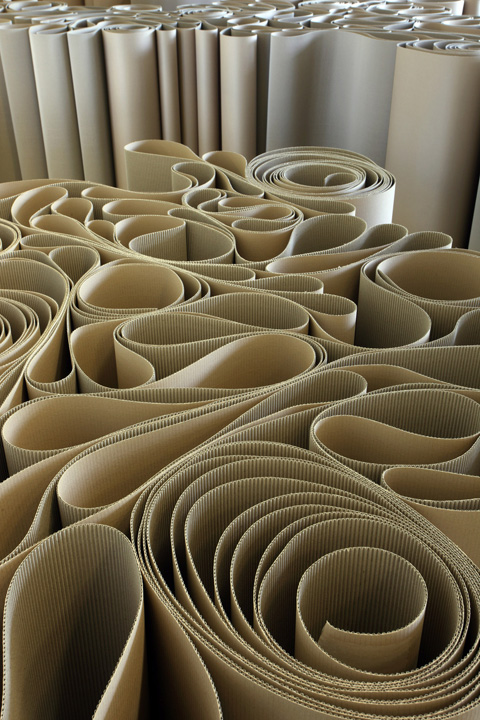Last Two Days of Mirror of Judgement: Michelangelo Pistoletto at the Serpentine Gallery

"How many corrugated cardboards did Michelangelo Pistoletto use for this show?" I asked one of the invigilators at the Serpentine Gallery when I visited there last week. "I don't know," she said, surprised at the incredulity of my question while giving me a look that says "Does it really matter?" She was right – it really didn't matter because the effect is a labyrinth and experience of space like nothing else you can imagine.
Except the space for the Mirror of Judgement is made out of rolls and rolls of corrugated cardboard, a cheap material that is accessible and familiar in our consciousness. As one of the early pioneers of Arte Povera or "Poor Art", Michelangelo Pistoletto has explored the use of cheap materials to seek fundamental discussions on contemporary life.


Here, Michelangelo stretches the normal limitations of cardboard, highlighting it not only as the central figure in the show but also creating it as the architecture within the architecture. It has transformed the Serpentine gallery into a living, breathing and intimate space.
Apart from rolls and rolls and winding maze of cardboard, there are large-scale mirrors that welcome the visitor when they arrive at specific corners of sacred space that pay homage to different religions. There is a prayer mat, a life-size Buddha, and a Gothic prayer kneeler in front of these mirrors which invite the viewer to explore their reflection as well contemplate deeper religious truths, or perhaps the labyrinth of life itself.
Michelangelo Pistoletto explains the meaning of Mirror of Judgement

I found myself gazing at my own self several times, contemplating my place not just as a viewer but as a participant in the installation, discovering that each angle I took revealed a new nook, a new corner, a new perspective.
And perhaps that is the real success of this show - it allows the viewer to seek his or her place within the installation and find personal meanings. Michelangelo cares about what we think and elevates our position to part-creator in the whole experience of seeing, viewing, and interacting. In fact, I imagine Michelangelo watching us from a screen, amused with our reactions as we walk thru the winding maze of cardboard labyrinth at the Serpentine.

The beauty of Mirror of Judgment is that as you go thru the whole gallery, you still wonder what you might discover or imagine. On a personal note, my experience was very spiritual. Mirror of Judgment helped me obtain a new idea of myself – that I could be so much more than just an insignificant viewer of artworks. That I could be a part of an artwork as a co-creator by simply breathing it, living it and being on it.
The experience
Related Links: